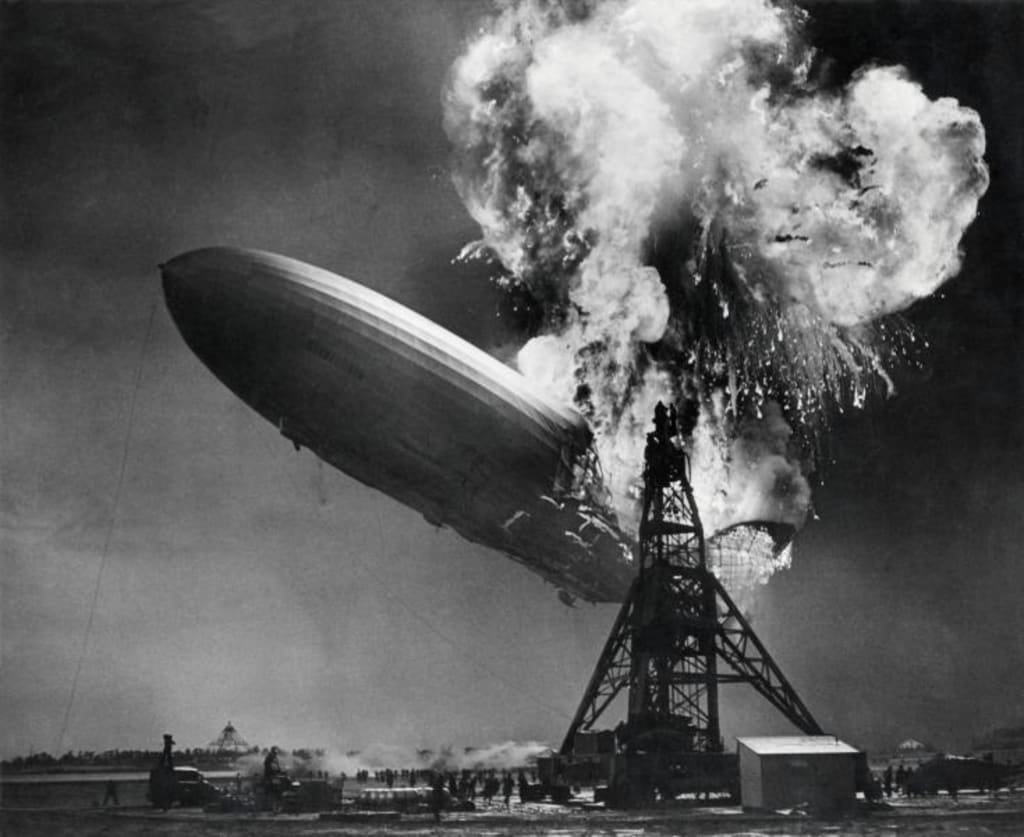HIDDEN MYSTERY OF THE HINDENBURG DISASTER SOLVED
(Mystery of Hindenburg)

The enormous Hindenburg airship was hailed as the future of opulent air travel when it made its debut, but on May 6, 1937, following a transatlantic flight, the German passenger airship was suddenly engulfed in flames and crashed as it attempted to land at the Naval Air Station in Lakehurst, New Jersey. The tragedy, which claimed 35 lives, came to represent the end of the airship era.
What transpired on that terrible May evening is still up for debate 80 years later, so what sent the Hindenburg to its doom?
Airship historian Dan Grossman stated that there were "always issues with airships from a safety perspective." "They are large, cumbersome, and challenging to handle. They are particularly vulnerable to the wind and quite delicate because they must be light. On top of that, hydrogen, a material that is extremely toxic and highly flammable, was used to inflate the majority of airships.
Investigations conducted in the wake of the accident and later reconstructions proved that Lakehurst's hydrogen and unfavorable meteorological conditions were what brought the airship down.
To be honest, I don't think there is a cause for the enigma surrounding the Hindenburg tragedy, said Grossman to Live Science. "We are very much up to speed on everything. Since there was a thunderstorm at the time of landing, we know that hydrogen was leaking and that it was likely ignited by an electrostatic discharge.
BEYOND SHADY DEALINGS
The reason for the hydrogen leak is the only true mystery surrounding the Hindenburg tragedy, according to Grossman. After all, it was 1937, just two years before the start of World War II, and there was speculation that the Zeppelin may have been brought down by a saboteur, an opponent of the emerging Nazi Germany.
The idea that someone attempted to blow up a Nazi airship is significantly more appealing, according to Grossman than the idea that an electrical discharge occurred during a storm.
But no sign of a bomb has been discovered in 80 years, he continued.
The Hindenburg's owner, the Zeppelin Co., was the first to hypothesize that an intentional act may have driven the passenger ship to its demise. The company had previously received threatening letters, but later dropped that theory and supported the static-spark theory.
Conspiracy theories persist, nevertheless, and the Hindenburg fire never stopped capturing the public's attention. Finding a human cause for the tragedy has been the subject of several publications released over the years, one of which served as the basis for the plot of the 1975 movie "The Hindenburg."
Period Of Airships
However, the flaming downfall of the Hindenburg wasn't the first or only airship catastrophe. Not even the deadliest one was it. In actuality, 61 of the 97 individuals on board survived the accident, albeit with injuries, even though the fire reduced the 800-foot-long (245-meter) zeppelin to a pile of ashes and debris in less than a minute.
Before the Hindenburg, the British R101 was the largest airship in the world. In a deadlier catastrophe, it crashed into a forest in northern France in 1930, killing 48 of the 54 people on board. It's interesting to note that, according to the Bedford Borough Council, some sources indicate the Germans utilized debris from the wreckage of the R101 to construct the Hindenburg.
Airships were already an antiquated and disregarded technology at the time of the Hindenburg tragedy, and airplanes, which are far faster and more effective, were set to take their place, according to Grossman.
The airship's flame-filled conclusion was photographed, which is the main reason the Hindenburg disaster became burned in people's memories and left an irreparable mark on aviation history.
The Hindenburg is still spoken about mostly because it was captured on film in 1937, which was a truly amazing feat. People are accustomed to watching things on television or the internet today, but in 1937, people were not accustomed to witnessing natural calamities firsthand.
In its second season of flying, the Hindenburg made its first visit to the United States from Germany. News teams, photographers, and curious residents converged to witness the sight. They had no idea that the experience would be far more memorable than they had anticipated.
Both the eyewitness radio story by journalist Herbert Morrison and the image of the "pride of the skies" erupting into a ball of fire as it approached a mooring pole in bad weather is now considered a part of cultural heritage.
All of these factors increased the public's perception of the Hindenburg accident relative to other airship disasters that occurred.
About the Creator
Zenia Samson
Hi, I'm Zenia and I love to get information and know the facts as I believe in the motto of "Knowledge is power" and I would love to be a powerful person.
Here im going to share my power with you
Thanks!






Comments
There are no comments for this story
Be the first to respond and start the conversation.